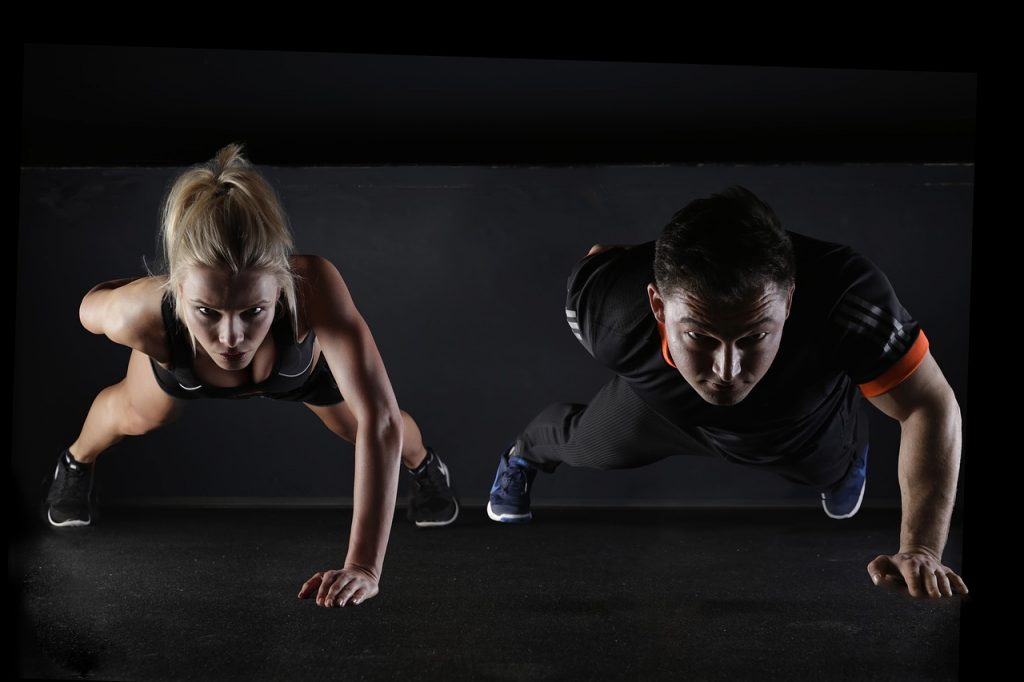What are the benefits of isometric exercises?
What are isometric exercises?
Before getting into the the benefits of isometric exercises, let’s define what they are. Isometric exercises is a form of low-impact resistance workout. This type of workout helps by promoting gain of muscle or strength. Isometric is a stationary workout, which forms exercises that work the muscles by pushing them against other muscles while remaining fixed or against the muscles, which strengthens the muscle. Thus, the isometric exercises are a stimulus added to stimuli, which force the muscles to respond.
Simple yet efficient
Isometric exercises are about keeping the muscle contracted and still rather than making any movement during the contraction. According to studies, the isometric exercises can give results, such as enlargement of the cells growth, which resizes the muscles, rather then the cells. In other words, one of the main benefits of isometric exercises, is the the muscles fibers building through resistance. According to studies the isometrics also help to gain muscle, while consistency works to augment the muscles relaxation and contraction points.
How to perform isometric exercises?
Isometric training requires that you balance joint spaces amid diverging rows of muscles. Isometric exercises do not require weightlifting, yet they will increase the muscles strength, however if your aim is bodybuilding, you must understand that isometric exercises cannot stand alone to build or sculpt the muscles. In other words, anyone can benefit from isometrics, but you need to workout with other types of exercises incorporated to the isometric routines if you want to sculpt your body the way it meant to be! Weight training when employed with isometrics can help you to sculpt the muscles sooner. Yet, at what time you combine isometrics with progressive resistance training, thus the chances of restoring the body’s natural physique increases.

When should I do it during my Fitness session?
One of the golden rules of thumb while isometric training along with training in other areas is to apply flexor isometric exercises after working out in your normal routine. In other words, at what time you finish lifting weights start the flex isometric routine. We bodybuilders incorporate this routine in weightlifting, which claims state the builders muscles improved in vascularity and overall muscle detail.
In a nutshell, what are the main benefits of an isometric training?
- Fast strength building
- Joints protection
- Fat burning
- Lowering blood pressure
- Low risks of injuries
- Becoming fast and explosive
- Improvement of the posture
- Overcoming a plateau

In addition, you can easily modulate the level of difficulty to meet your needs and experience.
Simply by extending the duration of the contraction. To help you perform flex isometrics we can consider a few exercises. Again, always warm up and stretch before starting a full-scale workout.
- Flex kicks is the process of seating on the floor, while reading to flex the legs. As you rest on the floor, use your hands, lower arms, and buttocks to support your weight. Once in position, kick with the knees bent, kicking up high, and out, spreading the legs. Next, bring the legs inward, repeat and then inward again.
- The side flutter kicks are another type of isometric exercise. While performing the tactic kick the legs in a stride, while position self on the floor, and speedily kick back, and to the sides while pointing your toes, and kicking wide.
- Single flex kicks include positioning self in the floor, while balancing the body with the buttocks and hands behind the back, at the same time kicking the right leg upward while learning back. Repeat the steps on both legs.
- Leg flexes include sitting on the floor with the elbows and knees bended upward, and the legs flexing. Now, straighten the legs and arms, while extending the arms over the head bending the elbows. And then extending upward as far as you can while pointing the toes.
- The flex and hold incorporates the point and hold workout. Sit in the floor in a comfortable position. Now, point the toes forward as you face down with the head touching the knees and the hands grasp about the feet. Count to eight, start the flex and hold. Thus, flexing the toes backward while holding in position. The head show go center down while the points of the fingers touch the toes. Count to six and release.
Should I do isometric exercises?
Various other types of isometric flexes are available; thus it takes you to learn and apply. Indeed, when it comes to fitness you must try, try and try in order to find what work the best for you. Also, if you want to progress you need a variety of training. I am not just talking about changing weight, increasing your reps, varying sets or exercises… but changing training techniques. This means completely different techniques, from the classical workout with dumbbells and weights. Whether you’ve just had injury or you’re simply want to vary your fitness routine, if you intend to do a complete isometric session, you should just use it like any regular strength training. At this end of the day, by activating nearly all the available motor units, isometrics are simple and efficient forms of workouts.
Identifying your Fitness goals is the key
Yet if you are new to workout, I recommend you to identify your goals, whether it is building lean muscle, losing belly fat etc. and learn all you can before starting a workout. Especially because, like I just mentioned earlier, the limits of isometric workout is that they cannot stand alone to build or sculpt the muscles.
Ben – Iron Fit Food
www.ironfitfood.com
instagram: ironfitfood
www.facebook.com/ironfitfoodth
